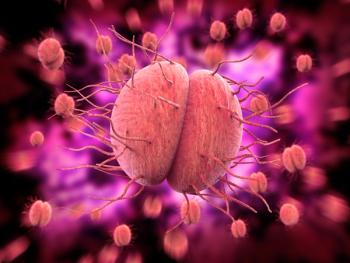
Medical marijuana for children with cancer
Pediatricians have had concerns about the known risks of marijuana use in children. What’s next for kids with cancer?
With medical marijuana now legalized in 29 states and the District of Columbia for treatment of serious health conditions, pediatricians, like all physicians, increasingly need to know how to handle requests for marijuana from their patients.
For pediatricians who care for children with cancer, choosing to offer medical marijuana to their patients is particularly fraught as very little data exists on the benefits of marijuana whereas the risks of marijuana, particularly on the habitual use in children and youth, is well established.
“It is challenging for providers to recommend something that hasn’t undergone a certain level of rigorous study,” says Prasanna Ananth, MD, MPH, Section of Pediatric Hematology/Oncology, Department of Pediatrics, Yale School of Medicine, New Haven, Connecticut, emphasizing the concern that pediatricians have about the known risks of marijuana use in children.
Currently, the American Academy of Pediatrics (AAP) recommends against making marijuana available to children and young adults.1,2 However, the AAP also recognizes that medical marijuana may play a supportive or therapeutic role for some children with serious illness.
Given the controversy over the use of medical marijuana, particularly in children, Ananth and colleagues undertook a
Because not all providers are legally eligible to write a recommendation for obtaining medical marijuana, the study stratified the providers into 2 groups: those who are legally eligible to certify (ETC) for medical marijuana, and those who are not (n-ETC).
What the researchers found is a willingness among most pediatric oncology providers to consider medical marijuana use, particularly those providers who were n-ETC to recommend medical marijuana.
“We found that those providers who are legally eligible to recommend medical marijuana were actually more cautious about recommending it for supportive care,” says Ananth.
Closer look at the data
The study included 288 pediatric oncology providers who responded to a 32-item survey on medical marijuana practices, knowledge, attitudes, barriers, and timing of use. The median age of the providers was 35 years, most were women (85%), and most were white (92%).
Providers practiced in 1 of 3 designated cancer centers (Dana-Farber/Boston Children’s Cancer and Blood Disorders Center in Boston, Massachusetts (n=129); Ann and Robert H. Lurie Children’s Hospital in Chicago, Illinois (n=43); and Seattle Children’s Hospital Cancer and Blood Disorders Center in Seattle, Washington (n=116). The clinicians represented a multidisciplinary group of providers (physicians, nurse practitioners, physician assistants, psychologists, social workers, and registered nurses).
Although all the providers practiced in states in which medical marijuana is legal, states have different criteria for who are legally ETC. For example, only physicians are legally ETC in Massachusetts and Illinois, and physicians, nurse practitioners, and physician assistants are ETC in Washington state. As stated above, the study stratified the analysis based on whether a providers was ETC (n=96) or n-ETC (n=192).
The Table highlights some key findings of the study.
Among these findings, Ananth points to the high percentage of providers who would consider medical marijuana for supportive care. However, ETC providers were significantly less likely to approve medical marijuana than n-ETC providers.
Ananth also underscores the generally low levels of knowledge about state-specific medical marijuana regulations and some confusion about federal regulations. “I think this is interesting because we’re on the cusp of having medical marijuana legalized in almost half of the United States at the state level, and clearly patients and families are asking about it fairly frequently,” she says.
As such, Ananth emphasizes that pediatric oncology providers may need to respond to the expected increasing requests for medical marijuana by their patients and families.
Need for institutional guidance
Given the lack of scientifically rigorous evidence on the benefits of medical marijuana, particularly in children, Ananth emphasizes the need for institutions to talk about how to approach patients and families requesting medical marijuana and to develop formal policies around that.
“In the absence of scientific evidence, I think every institution ought to develop some policies, particularly in states where medical marijuana is legalized,” she says.
References
1. Committee on Substance Abuse, Committee on Adolescence. The impact of marijuana policies on youth: clinical, research, and legal update. Pediatrics. 2015;135(3):584-587. Available at:
2. Ammerman S, Ryan S, Adelman WP; Committee on Substance Abuse, Committee on Adolescence. The impact of marijuana policies on youth: clinical, research, and legal update. Pediatrics. 2015;135(3);e769-e785. Available at:
3. Ananth P, Ma C, Al-Sayegh H, et al. Provider perspectives on use of medical marijuana in children with cancer. Pediatrics. 2018;141(1):e20170559. Available at:
Newsletter
Access practical, evidence-based guidance to support better care for our youngest patients. Join our email list for the latest clinical updates.








